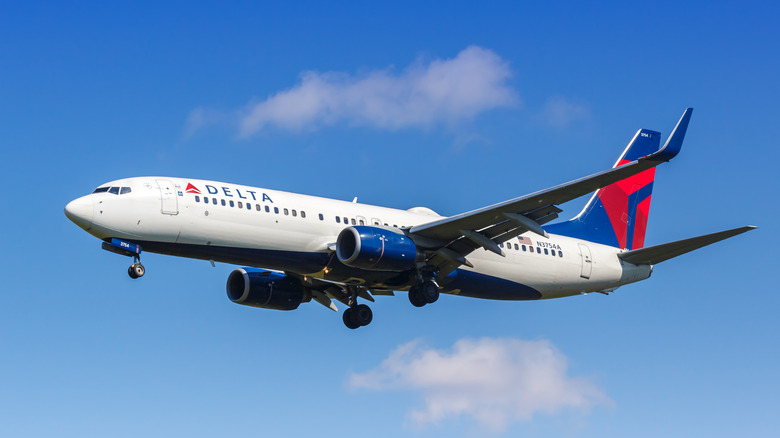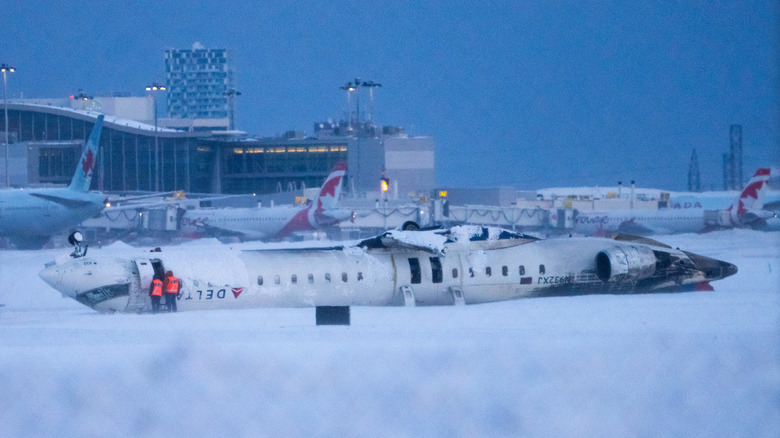What Happens If An Airplane's Wing Breaks Off Mid-Flight?
Earlier this week, a flap came loose on a Delta Air Lines operated Boeing 737 mid-flight. Fortunately, the plane landed safely and no one was injured. Parts falling off of a passenger jet's wing mid-flight is an extraordinarily rare occurrence, and the incident with the recent Delta flight only involved a small part of the wing. It still shouldn't have happened, and it could have been much worse, but the fact that no one was injured, and the plane stayed mostly intact highlights the fact that air travel is still the safest way to travel.
In the greater aviation world, planes have had entire wings fall off mid-flight and the results haven't been that dramatic, mostly depending on the type of aircraft involved. In May 1983, an F-15D flown by the Israeli Air Force hit another fighter jet during a training exercise and its right wing fell off. The pilot and navigator were able to land without any injuries. Similarly, the A-10 Thunderbolt II (also known as "The Warthog") had taken a beating during combat missions and managed to land even without hydraulic control. Both the F-15 and A-10 are designed for combat, meaning the airframe is generally more robust than a passenger plane.
Pilot error and maintenance negligence
On the passenger aviation side, the results aren't as fortuitous. On November 12, 2001, American Airlines Flight 587, an Airbus A300-600, crashed in New York after its vertical stabilizer (the vertical "wing" on the tail) separated mid-flight. 265 people died in that incident, and it did not happen spontaneously. The Federal Aviation Administration and the National Transportation Safety Board investigated the crash and found that it was due to pilot error. One of the pilots onboard operated the plane in a way where the stabilizer experienced too much stress and broke.
On December 2, 1968, a Fairchild 27-B, a propeller driven passenger plane flying for Wien Consolidated Airlines, crashed in Alaska, killing 39 people onboard. In that incident, according to the National Transportation Safety Board (PDF), "the right outer wing, the empennage (the plane's tail), portions of the left wing, and other components of the aircraft structure had separated from the aircraft in flight." The investigation found that the airframe was already excessively fatigued, causing the crash.
On the brighter side, when a CRJ-900's wings separated after a crash landing earlier this year, it allowed first responders to get to the scene faster and passengers to get out much quicker. No one was killed in that incident. Such crashes are rare, and instances where major components of the plane separating during flight are usually due to pilot error or maintenance negligence.

